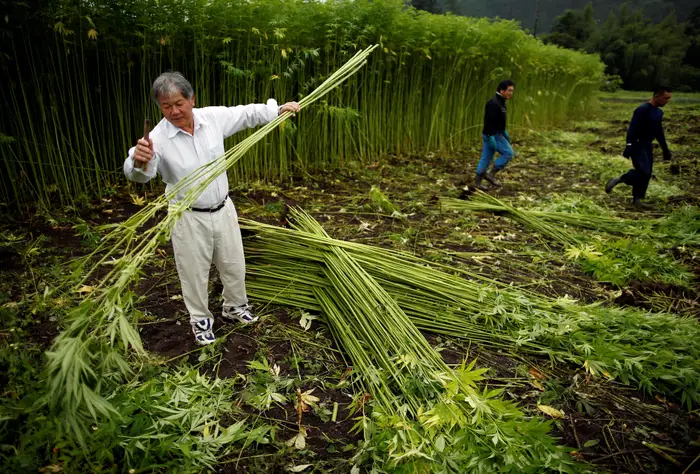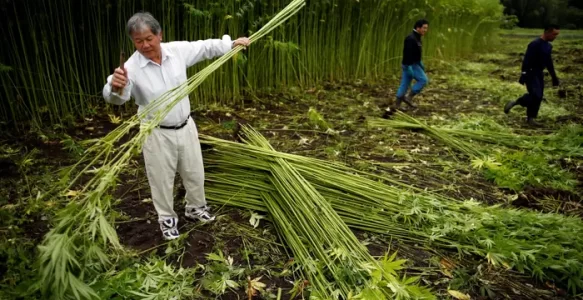Hemp was an important agricultural crop for Japan for centuries, but its development is only now beginning to receive attention. Its history is intertwined with the lives of the Japanese. A 57-year-old American expatriate has been reopening a village in the same region and preserving the history of hemp farming in Japan. The museum’s director Junichi Takayasu explains how the plant was used by the Japanese and how it shaped their culture.
In the early ages, hemp was widely grown in Japan and was used for rope, paper, and oils. As a matter of fact, it was so popular that ninja apprentices jumped over the fast-growing plants to practice their art. Hemp cultivation was also encouraged by feudal lords, who encouraged the growth of this crop. Rich merchants cultivated hemp for the production of fine clothing.
In the decades prior to World War II, the cultivation of hemp was illegal in Japan, but it still was widely produced and sold. Shinto farmers produced symbolic hemp crops and presented them to the emperor. Today, many people in Japan grow hemp and make it into fine cloth for the imperial family. The fibers of hemp are so strong that they can be recycled many times, and hemp was made into paper, which was used for paper.
Hemp cultivation in Japan was once widespread in the country, but its popularity waned after the government began to impose strict regulations on the industry. Hemp was outlawed in Tottori Prefecture in 2017 and new rules made it necessary to renew a license each year. The new hemp regulations made it difficult for farmers to stay in business, and they had to pay huge sums of money to do so.
The HIHA was founded by a Shinto farmer, who planted a hemp crop for the emperor as a symbol of their belief in the value of hemp. The farmers grew hemp to provide clothing for the imperial family. In addition to being used as a material for textiles, the hemp fiber was also used for hats. The emperor’s hats were made of the fabric, called aratae.
Aside from hemp cultivation, Japanese hemp farming was also used for medical purposes. It is a popular source of fiber for hats and clothing. The plants were used for textiles, clothing, and other purposes. Hemp cultivation is legal in Japan, but it is not yet regulated in the country. In Japan, it was only until the 1990s that it was considered legal to grow hemp. Despite its high cost, it is still worth cultivating in order to benefit the economy.
Hemp has long been an important part of the Japanese culture. It was used for food during the Edo period, and the ‘hippy’ counterculture encouraged the cultivation of hemp. Hemp farming was a risky venture in Japan. It was also illegal to use it for other purposes, including the production of drugs. While there are no laws against cannabis in Japan, it is illegal to sell it in the country.
Hemp cultivation was allowed to continue in Japan, despite a controversial image due to the presence of hippies and soldiers returning from the Vietnam war. Despite the opposition to the cultivation of hemp, it was nevertheless a popular crop. The imperial family cultivated hemp in the late 1960s, and hemp was legalized in the country. The laws are currently being revised and a few farmers are already producing it. But hemp farming in Japan is not yet widespread in the country. Its legal status means that only farmers licensed by the prefectural governors can grow the plant.
In the 1970s, the United States began to grow hemp in Japan as a symbol of peace and prosperity. The plant is a staple crop for the imperial family and is grown for its high-quality fiber. Its widespread cultivation, especially in Japan, is an important part of the Japanese economy. It is not only legal in Japan, but it is also used to make colorful clothing and is used in rituals. The use of hemp was not restricted, but it became more widespread in the country.

